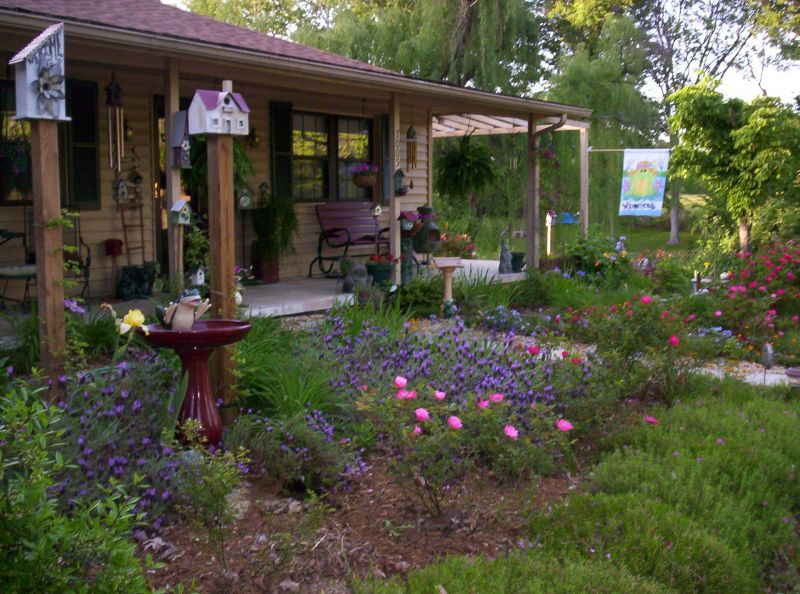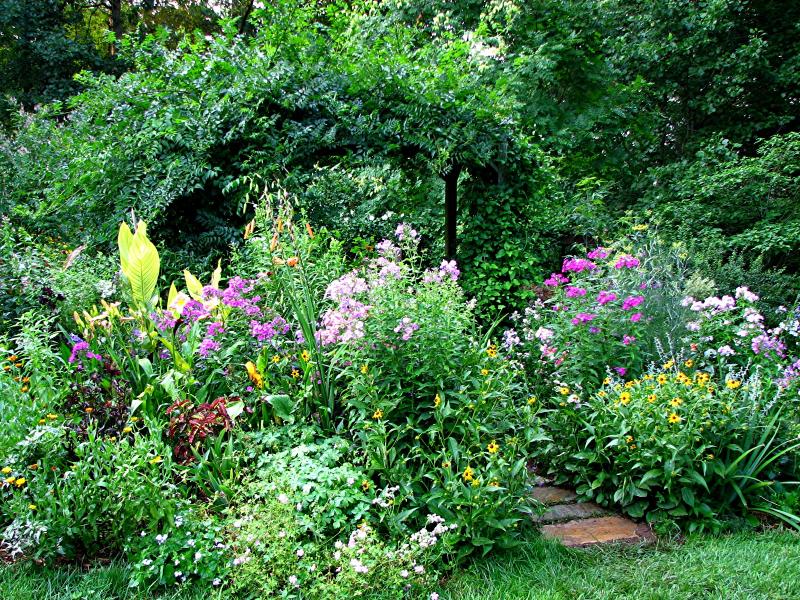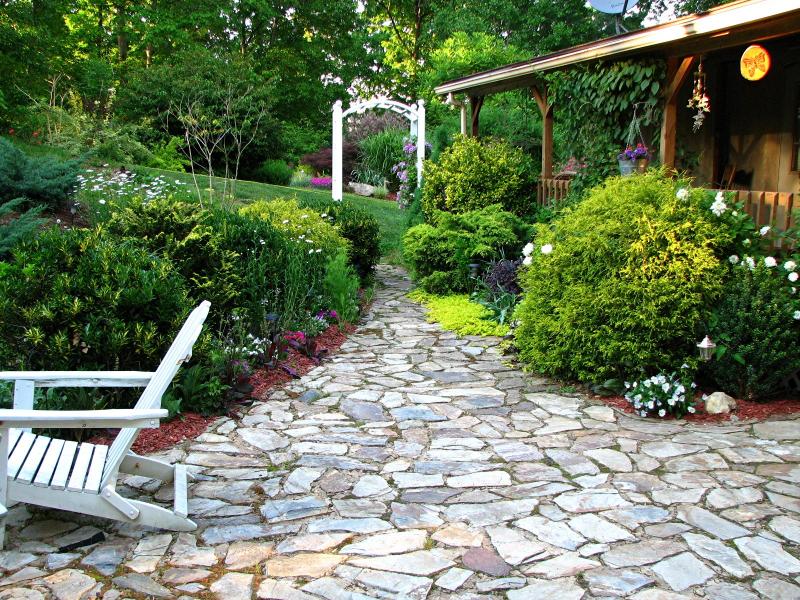Be a Cottage Garden Renegade
It is easy to be intimidated by all the gardening and landscaping information out there. Books, magazines, websites, and how-to TV shows promise to teach you all the fundamentals of good design in one fell swoop and leave you ready to give your yard a full makeover in the time it takes to turn a page, click a link, or sit through to the next commercial break.
But if the rules and exact science of good landscape design elude you or are just unappealing, consider a cottage garden. The main rule is that there really arent many rules in this super-busy, ultra-colorful, practically-haphazard gardening style. But it totally works, and often results in something that looks like a fairy tale come to life. Just ask Deronda in Knoxville, TN:
Here are some tips for creating the classic cottage garden look yourself.
Size/scale: Cottage gardens are, by their very nature, small. The trend can be traced back to Englands Tudor era, when more and more peasant-types were becoming landowners. Now outside the castle walls of the local lord, folks often had to grow their own vegetables and herbs and raise their own animals on their own (usually-tiny) parcels of land. And with more and more varieties of plants suddenly arriving from around the expanding world, people had more choices than ever. They planted what they needed, and used blooming flowers to fill in the spaces as decoration and to attract bees that helped pollinate their gardens.
A true cottage isnt a requirement, but a smallish house or other structure does help enhance the cottage effect. Check out what Mary A. Abshire did around a small outbuilding at her home in White Bear Lake, MN:
Plant types: Without the right kinds of plants, its just not a cottage garden. Think old-timey, romantic, heirloom plants. Old-fashioned flowers, self-sowing annuals, and freely-spreading perennials. Things your grandmother would have grown. Cindy in Campbell, CA has it nailed:
Look for roses, irises, daisies, peonies, foxgloves, hollyhocks, snapdragons, pansies, violets, delphiniums, carnations, tulips, marigolds, lavender. All are cottage garden classics. If it looks like it could be in a Monet painting, youre on the right track. The pastel family will be your primary color palette, like in Larks Wisconsin yard:
Plant layout: Heres where you get to really enjoy that no-rule thing. Forget exact plant placement or precise spacing techniques. The idea of a cottage garden is an informal, random, free-flowering, almost overflowing look. Plants should be crowded- even packed- together in huge masses of color and foliage, with one plant cascading over and weaving through the next. A cottage garden doesnt look designed, but instead puts on a glorious show with wild abandon. Your goal is to fill every square inch of space with an explosion of color. Take a peek at Geraldine Deans garden in Hickory, NC:
Enclosure: A white picket fence is perhaps the single most defining characteristic of an authentic cottage garden for many. In early cottage gardens, the fence marked the property line and kept your children or your animals on your land. Today, the idea of an enclosure remains a popular element of a cottage garden. They contain the chaos that is often a cottage garden and frame it, and they provide the gardener a great background for their colorful blooms to really pop, like at Pamela Zuchowskis former home in Kane, PA:
The enclosure doesnt have to be a fence. Low, rustic-looking stone walls work well, too, as do evergreen hedges, which provide the same kind of year-round backdrop. Arbors and trellises create interest at varying heights and also give climbing plants room to grow. Randi Deutsch shows off some great examples:
Walkways: Access is important to a cottage garden. Its not just a view to be taken in from far away, its meant to be enjoyed up close and personal. Winding, meandering pathways around and through the beds are a cottage garden mainstay. Irregularly-laid stone and brick are nice choices, preferably with plant material growing in the cracks in between. Again, a textbook example from Geraldine Dean:
Feel free to make your walkway narrower than normal for a more intimate feel thats a natural fit in a cottage garden.
Details: In a small-scale garden, every detail matters. Look for whimsical touches you can include in beds or along pathways. Strive for antiques or vintage accessories to create a sense of age. Mismatched furniture creates an eclectic look. Worn wood, old wicker, peeling paint, rusted metal, and weathered stone are all great material choices. Yard sale treasures work well, as do many found household items. Heck, even a pile of something you already have lying around can be turned into an objet dart in the cottage garden. Susie Tross used clay pots in her yard in central Florida:
Almost anything goes in a cottage garden, so its hard to go wrong. And you may just find your own happily ever after waiting for you when youre done.



